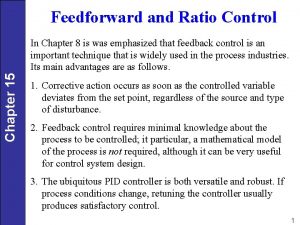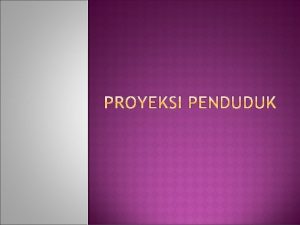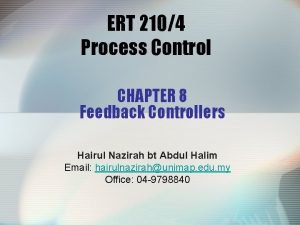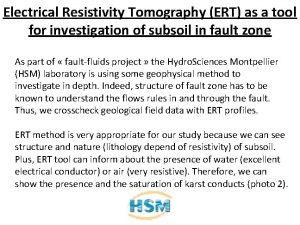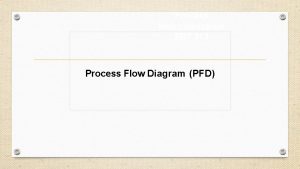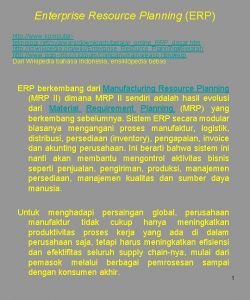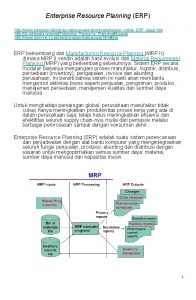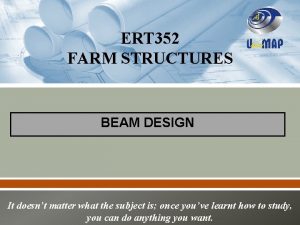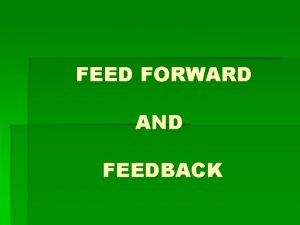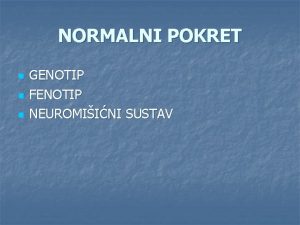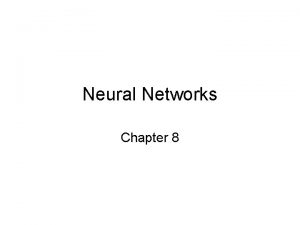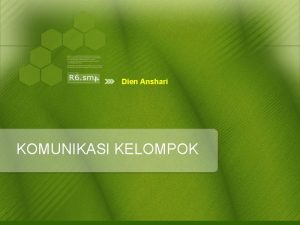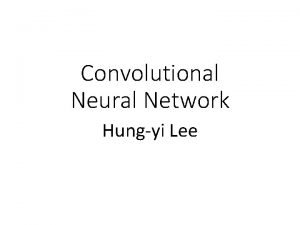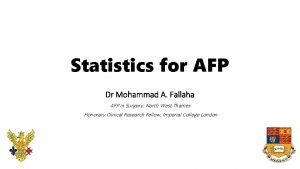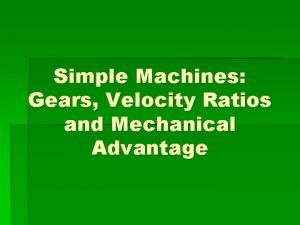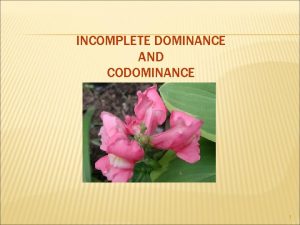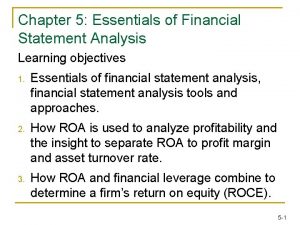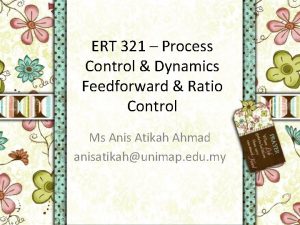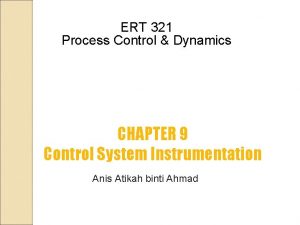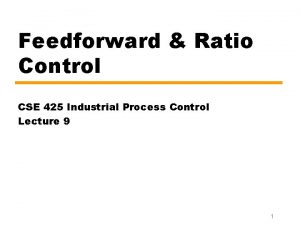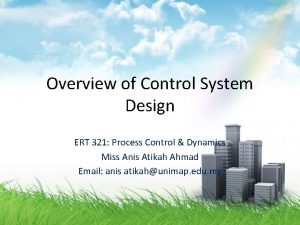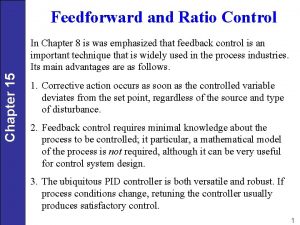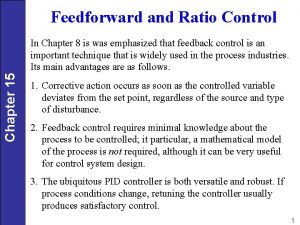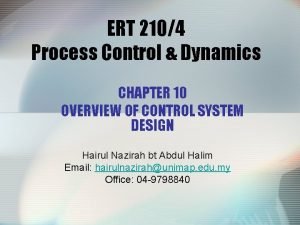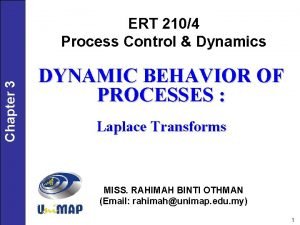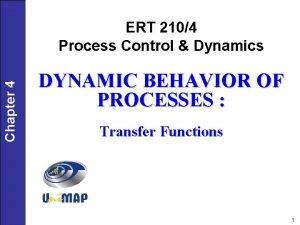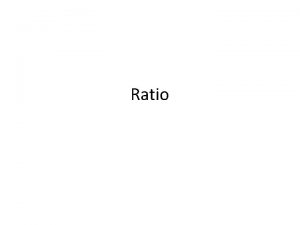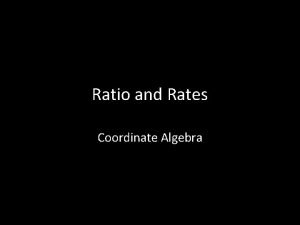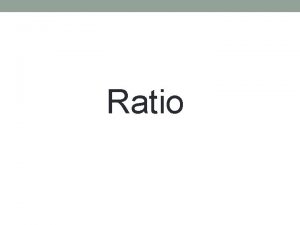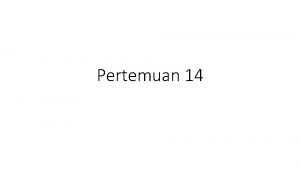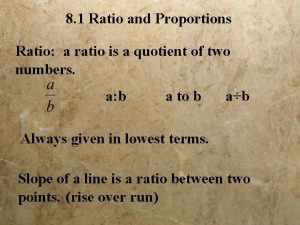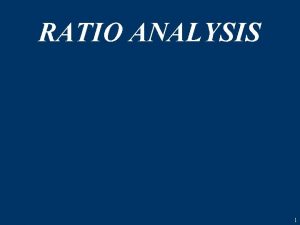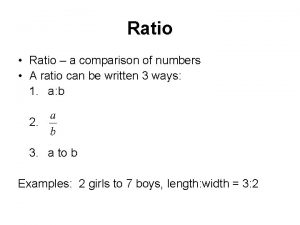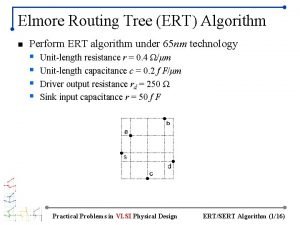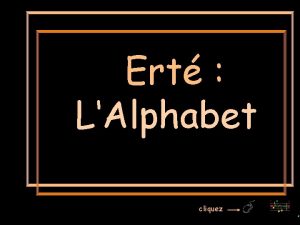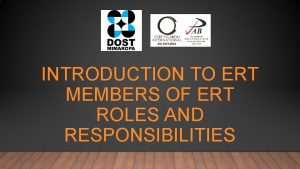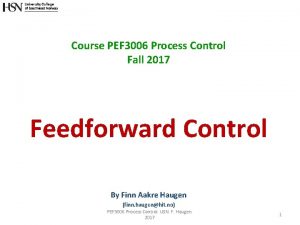ERT 321 Process Control Dynamics Feedforward Ratio Control
























- Slides: 24

ERT 321 – Process Control & Dynamics Feedforward & Ratio Control Ms Anis Atikah Ahmad anisatikah@unimap. edu. my

OUTLINE • Introduction to Feedforward Control • Ratio Control • Other Control Strategies

v Intro: Feedback Control One of the simplest process control schemes. v controller for comparison to set point. If the process variable is not at set point, control action is taken to return the process variable to set point. v Advantage: corrective action occurs as soon the CV deviates from setpoint. v known or measurable disturbance Parameter being measured: Controlled Variable ( level of the water in the boiler)

Feedforward Control Basic concept: to measure important disturbance variables and take corrective action before they upset the process. Parameter being measured: disturbance variable (steam flow rate)

Feedforward Control (cont. ) Feedforward control is normally used in combination with feedback controller. Controller with summing functions are used in these combined systems to sum up the input from both the feedforward loop and the feedback loop, and send a unified signal to the final control element. Feedforward plus feedback controller

Ratio Control v Ratio control is used to ensure that two or more flows are kept at the same ratio even if the flows are changing. MV DV

Ratio Control (cont. ) FF FIC FT FT Water Acid 2 part of water 1 part of acid

Ratio Control (cont. ) Typical applications of ratio control include: 1. Setting the relative amounts of components in blending operations 2. Maintaining a stoichiometric ratio of reactants to a reactor 3. Keeping a specified reflux ratio for a distillation column 4. Holding the fuel-air ratio to a furnace at the optimum value

Method I Disadvantage: divider element makes the process gain vary in a non-linear fashion, where:

Method II Desired ratio Transmitter span for DV & MV

Example 15. 1 • A ratio control scheme is to be used to maintain a stoichiometric ratio of H 2 and N 2 as the feed to an ammonia synthesis reactor. Individual flow controllers will be used for both H 2 and N 2 streams. Based on the following information: • • The spans of the flow trasmitters are 30 L/min for H 2 and 15 L/min for N 2. The control valves have pneumatic actuators. Each required current-to-pressure (I/P) transducer has a gain of 0. 75 psi/m. A. The ratio station is an electronic instrument with 4 -20 m. A input and output signals. (i) Draw a schematic diagram for the ratio control scheme (ii) Specify the appropriate gain for the ratio station, KR

Example 15. 1 -Sol (a) Ratio control schematic diagram 3 H 2 + N 2 ⇌ 2 NH 3 In order to introduce a feed mixture in stoichiometric proportion, the ratio of the molar flow rates (H 2/N 2) should be 3: 1. Assume ratio of molar flowrates = ratio of volumetric flow rates;

Example 15. 1 -Sol (b) Appropriate gain for the ratio station, KR The stoichiometric equation for ammonia synthesis reaction is: 3 H 2 + N 2 ⇌ 2 NH 3 From stoichiometric equation, it follows that the desired ratio is, R d =u/d =1/3 Substituting into gives;

Block diagram of Feedforward. Feedback control system Figure 15 -11: A block diagram of feedforward-feedback control system

Feedforward-Feedback control system The closed-loop transfer function for disturbance changes can be derived as follows: Eq 15 -21 Ideally, we want a perfect control, where the CV remains exactly at the set point with any changes in DV. If the set point is constant, Ysp(s) =0 , Y(s) =0, This condition can be satisfied by setting the numerator of Eq 15 -21= 0. Thus:

Stability Considerations Consider the closed-loop system in Figure 15 -11:

Stability Considerations From the closed-loop transfer function in Eq 15 -21, Eq 15 -21 the characteristic equation is: -Since Gf does not appear in the characteristic equation, the feedforward controller has no effect on the stability of feedback control system. This allows the feedback & feedforward controllers to be tuned individually.

Feedback-Feedforward Configuration • Typical configuration: Feedforwrad control in this strategy does not affect the stability of feedback control loop

Feedback-Feedforward Configuration • Alternative configuration: Feedback controller output serve as the setpoint for the feedforward controller. -> The feedforward control can affect the stability of feedback control system.


Cascade control • • Cascade Control uses the output of the primary controller (master) to manipulate the set point of the secondary controller (slave) as if it were the final control element. The output of the master controller being used to adjust the set point of the slave controller.

Cascade control (cont. )

Split Range Control Output of a controller is split to two or more control valves. CV-102 p. HIC TK-102 (base feed tank) p. HT 1 TK-100 (p. H adjustment tank) CV-101 TK-101 (acid feed tank) The diagram shows p. H adjustment; part of waste water treatment process. The process shall maintained at p. H 6. When the process liquid states below p. H 6, CV-102 will be opened to dosing Na. OH to the tank TK-100. When the process liquid states above p. H 6, CV-101 will be operated to dosing HCl.

Exercise… Identify type of control loop used below. PIC Y PT FC FT V-100 Process variable need to be controlled = Pressure
 Ratio control system
Ratio control system Pt = p.ert merupakan rumus dari pertumbuhan penduduk
Pt = p.ert merupakan rumus dari pertumbuhan penduduk Transfer function of pid controller is
Transfer function of pid controller is Ert tool
Ert tool Ert diagram
Ert diagram Ert erp definition
Ert erp definition Ert erp definition
Ert erp definition Ert 1 programa
Ert 1 programa Ert products malaysia
Ert products malaysia Intermediate beam design
Intermediate beam design Feed up feed back feed forward examples
Feed up feed back feed forward examples Feed forward communication
Feed forward communication Feedforward
Feedforward Feedforward neural
Feedforward neural Feedback feedforward
Feedback feedforward Beate sitek
Beate sitek Dien anshari
Dien anshari Is cnn a feedforward network
Is cnn a feedforward network Rr statistics
Rr statistics It is the reciprocal of velocity ratio
It is the reciprocal of velocity ratio Acid test ratio and quick ratio
Acid test ratio and quick ratio Fixed ratio schedule
Fixed ratio schedule Genotypic ratio and phenotypic ratio
Genotypic ratio and phenotypic ratio Measures of association in epidemiology
Measures of association in epidemiology Current ratio and quick ratio
Current ratio and quick ratio
